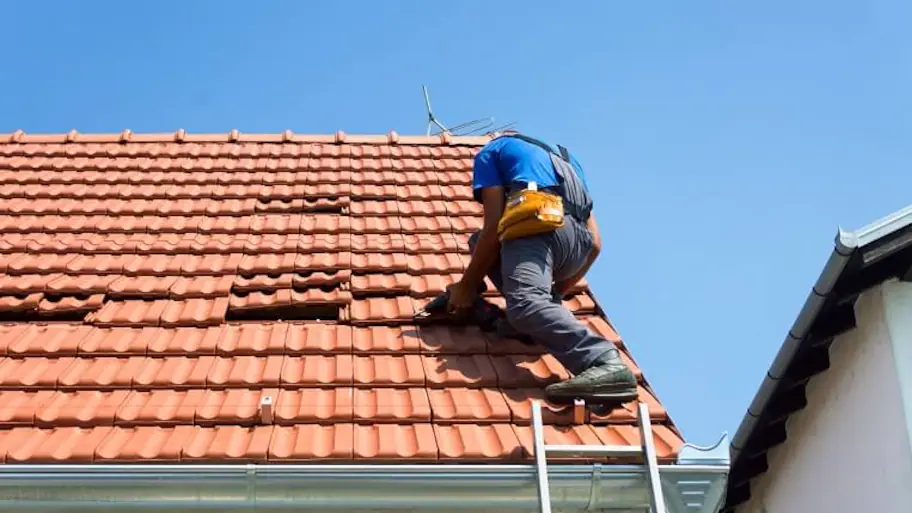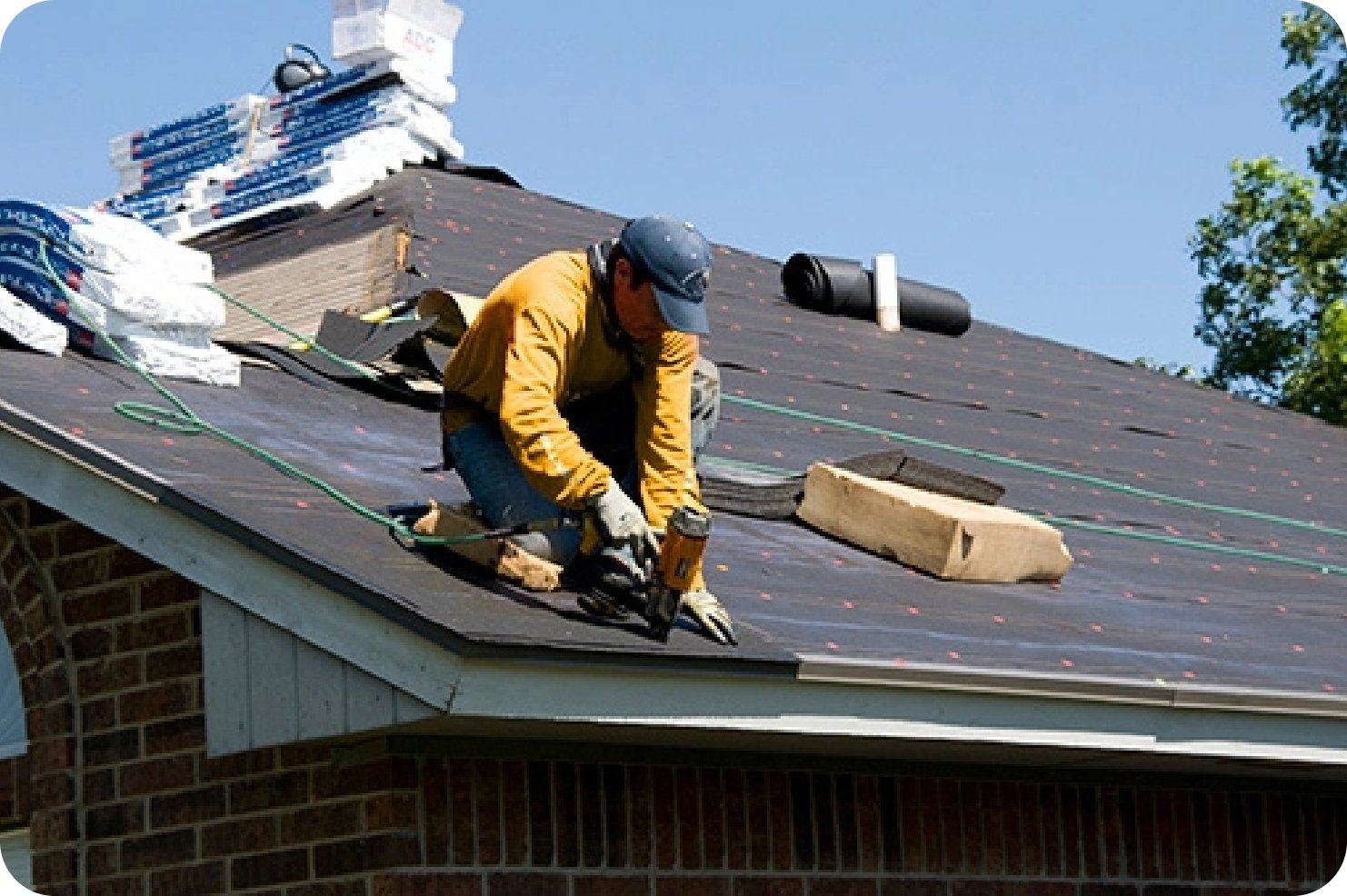Roofing Companies Oahu: Trusted Experts for Your Roofing Needs
Roofing Companies Oahu: Trusted Experts for Your Roofing Needs
Blog Article
Understanding the Different Kinds Of Roofing Systems: A Comprehensive Guide for Homeowners
With a variety of choices-- ranging from the traditional gable to the modern level-- each type provides one-of-a-kind benefits and difficulties that need to straighten with the home owner's environmental factors to consider and particular demands. As we explore the intricacies of different roofing kinds, it becomes evident that one dimension does not fit all; the appropriate selection may stun you.
Gable Roofs
Saddleback roofs, identified by their triangular form, are amongst the most popular roof covering designs because of their simplicity and effectiveness in dropping water and snow. This style features 2 sloping sides that meet at a ridge, permitting for effective water drainage and minimizing the risk of water buildup. The steep pitch generally connected with saddleback roofs enhances their capability to handle heavy precipitation, making them suitable for various environments.
In enhancement to their practical advantages, saddleback roofs provide visual versatility. They can be adjusted to different building designs, from traditional to contemporary homes. The design can likewise suit added features such as dormer windows, which improve all-natural light and air flow in the attic room area.
In addition, saddleback roofs offer ample space for insulation, contributing to energy efficiency. Home owners can select from a selection of roof products, including asphalt roof shingles, steel, and tiles, better enhancing personalization options.
Regardless of their benefits, saddleback roofs may need added support in areas prone to high winds or hefty snowfall. On the whole, the saddleback roof continues to be a preferred option as a result of its blend of capability, longevity, and aesthetic charm.
Apartment Roofs
Level roofs are commonly acknowledged for their minimal layout and functional applications, particularly in commercial and commercial settings (oahu roofing). These roofs feature a nearly horizontal or horizontal surface area, which permits for easy building and construction and versatile area application. While they might do not have the visual appeal of angled roofs, level roofing systems provide numerous benefits, especially in city settings where maximizing area is critical
One of the primary benefits of level roof coverings is their access. House owners can utilize the roof area for numerous purposes, such as roof gardens, terraces, or solar panel installations. In addition, level roofings are generally a lot more economical to preserve and set up contrasted to their sloped counterparts, as they need less materials and labor.
Nevertheless, flat roofs do existing specific difficulties. Correct drain is vital to prevent water pooling, which can lead to leakages and architectural damages. For this reason, choosing high-quality waterproofing products and routine inspections are essential for making certain durability. Usual products used for level roofs consist of built-up roofing (BUR), modified bitumen, and single-ply membranes, each offering distinct benefits. Generally, level roof coverings act as a practical and versatile choice for lots of home owners and companies alike.
Hip Roofings
Hip roofings are identified by their sloped sides that merge on top, creating a ridge. This style stands out from gable roofs, as all four sides of a hip roofing system slope downwards towards the wall find here surfaces, offering an extra secure framework. The angle of the inclines can differ, allowing for convenience in architectural aesthetic appeals and capability.
One of the main advantages of hip roof coverings is their ability to withstand heavy winds and unfavorable climate condition. The sloped surfaces allow much better water drainage, reducing the risk of leaks and water damage. Furthermore, hip roof coverings supply raised attic area, which can be used for storage space and even exchanged comfortable areas.
Nevertheless, creating a hip roofing system can be a lot Web Site more complex and costly than simpler roofing types, such as gable roofs. The added product and labor associated with creating the inclines and making sure correct structural stability can lead to higher expenditures. Despite these disadvantages, many home owners favor hip roofings for their longevity, aesthetic appeal, and possibility for power performance.
Mansard Roofings
Mansard roofings, frequently recognized by their unique four-sided design, feature 2 slopes on each side, with the lower slope being steeper than the top. This building style, originating from France in the 17th century, is not only visually attractive however practical, as it optimizes the useful space in the top floorings of a structure. The steep reduced incline enables for even more clearance, making it a perfect choice for attic rooms or lofts, which can be transformed right into living areas.
Mansard roof coverings are characterized by their adaptability, fitting various architectural designs, from conventional to contemporary. They can be built with different materials, including asphalt shingles, slate, or metal, providing house owners with an array of options to match their preferences and budgets. Furthermore, the design enables the assimilation of dormer home windows, boosting natural light and air flow in the top degrees.
However, it is vital to consider the possible disadvantages. Mansard roofing systems might call for even more upkeep as a result of the complexity of their style, and their high slopes can be challenging for snow and rainfall runoff. link In general, mansard roofs combine beauty with functionality, making them a popular option among property owners seeking unique building attributes.
Shed Roofings
As homeowners progressively look for simpleness and performance in their architectural layouts, shed roofing systems have actually arised as a popular choice. Characterized by a solitary sloping plane, a shed roofing provides a minimalist aesthetic that matches numerous home designs, from contemporary to rustic.
One of the primary benefits of a shed roofing system is its straightforward building, which commonly converts to decrease labor and material costs. This layout enables efficient water drain, minimizing the danger of leakages and water damage. Furthermore, the vertical slope provides ample area for skylights, improving natural light within the inside.
Dropped roofs likewise provide versatility in terms of use. They can be successfully incorporated into enhancements, garages, or exterior frameworks like sheds and pavilions. Additionally, this roof style can suit different roof materials, including metal, asphalt tiles, or perhaps eco-friendly roofings, straightening with eco-friendly initiatives.
Nonetheless, it is necessary to think about regional environment conditions, as heavy snow lots may necessitate modifications to the roof's angle or framework. In general, dropped roofing systems present a practical and cosmetically pleasing alternative for house owners looking to make the most of functionality without endangering design.
Conclusion


Gable roofings, identified by their triangular form, are amongst the most preferred roof covering styles due to their simpleness and effectiveness in losing water and snow. oahu roofing. The high pitch typically linked with gable roofs boosts their ability to deal with heavy precipitation, making them suitable for different climates
While they might do not have the aesthetic allure of pitched roof coverings, flat roofings supply various advantages, especially in city environments where taking full advantage of area is critical.

Report this page